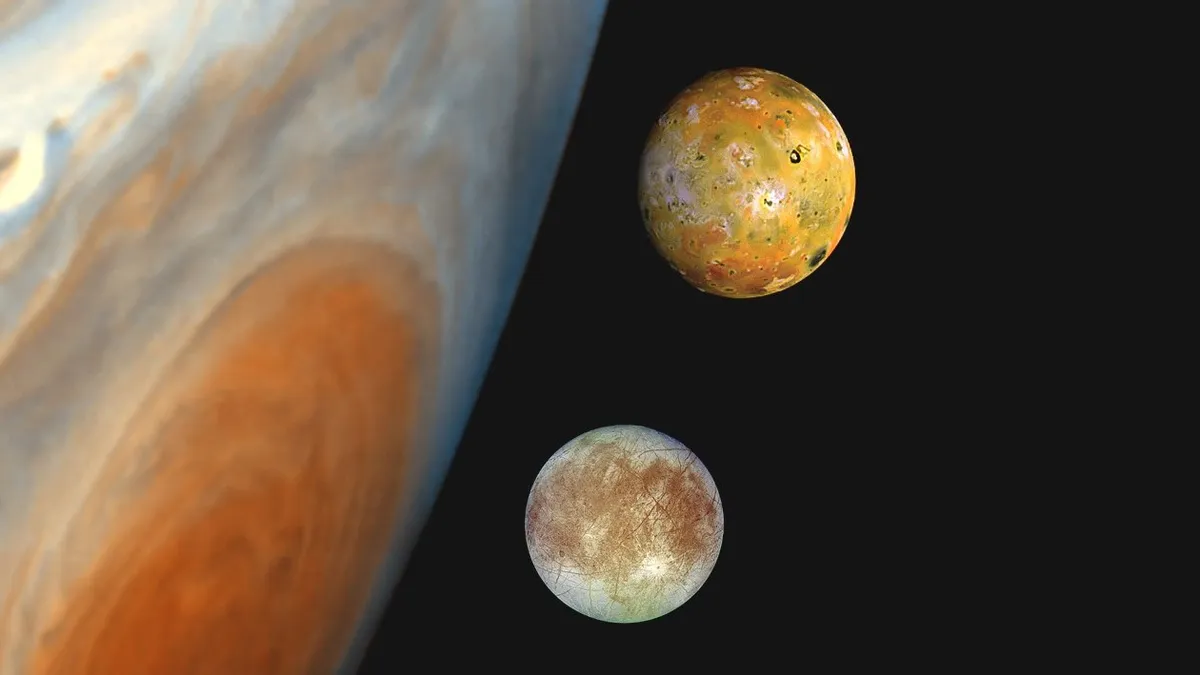During class, we have discussed magnetospheres, tectonics, geological activity, and their relation to the cores of the “Big Five”: Earth, Venus, Mercury, the Moon, and Mars. Specifically the moon has very obvious cratering across its entire surface, and its craters remain intact for billions of years. This is due to it not having an atmosphere which contributes to erosion, and most significantly the Moon has a cold, dense core that does not allow for great geological or tectonic activity. When I think of moons in general, I tend to think of all of them having a generally rocking and cratered surface. However, this is not always the case, as is demonstrated by the Galilean Moons.
While Callisto and Ganymede resemble our Moon somewhat in appearance, with visible craters and dark areas–in fact Callisto is one of the most heavily cratered objects in our solar system, Io and Europa look much different.
Io varies greatly in appearance from most other moons due to its yellowish color, surface littered with massive volcanoes, and obvious lack of cratering. Although volcanoes are typically associated with tectonic activity as on Earth, this is likely not the case for Io. Io actually has an elliptical orbit because it is in a constant struggle with the gravitational force provided by Jupiter and the other Galilean Moons, Europa and Ganymede. This causes Io to bulge as it orbits and experience extreme tidal forces. The tides and tidal friction cause Io to generate large amounts of heat (source). This heat radiates outward and fuels the constant volcanic activity on the surface. In turn, this volcanic activity causes the surface to constantly renew itself, explaining its lack of cratering. Although Io likely has an iron core, it does not cause the geological activity on its surface, and might not have a magnetic field at all. More information about Io’s surface can be found here.
Europa, which is a little smaller than our moon, has a very unique appearance with lots of “scratches” and deep cracks running all along its surface, and there are only a few craters. The lack of widespread cratering implies its relative youth (40-90 million years old) and that recent geological activity has removed them (source). Scientists believe underneath the icy crust (about 10-15 miles thick) is an ocean that the surface rests on. The much hotter iron core in its center causes the ice layer to move as the cooler, denser ice sinks and the warmer ice rises to the top. The ice layer separating due to this motion likely causes the cracking on the surface, and ice plates converging causes tall ice ridges. Another indication of potential geological activity is evidence of water being vented into space from its surface. This is likely due to tidal friction as mentioned with Io. Europa also has a unique magnetosphere which creates noticeable disruptions in Jupiter’s magnetic field, and could possibly be explained by a salty ocean resting under its ice layer. All of these factors contribute to the hope that Europa could one day sustain human-life due to its similarities with Earth, and more evidence continues to be collected. More information about Europa can be found here.
A rendering of Io and Europa is shown below.

Leave a comment